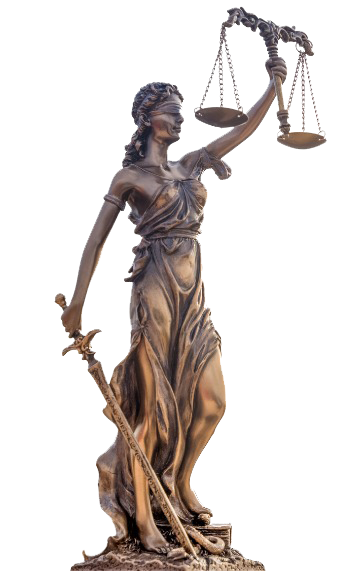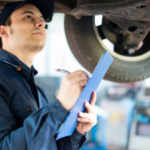
- Home
- About Us
- Services
- Information
- Contact Us
News & Information

Add Your Heading Text Here
Importing Vehicles
If you want to import a car into Costa Rica you will need some patience to deal with the different agencies that are involved in the process. Let me break it down for you.
The first step you need to undertake before you even ship the vehicle to Costa Rica is to hire the services of a licensed Costa Rican Customs Broker (Agencia Aduanal). The Customs Broker is licensed to interact with the Costa Rican Ministry of the Treasury Customs service on behalf of third parties.
As part of that process you need to provide the Customs Broker with all the relevant information about the vehicle. That way they can give you a rough estimate of the import taxes that the vehicle will have to pay along with their quote for the services provided.
What Happens When your Car Arrives in Costa Rica
The Vehicle Arrives in Costa Rica
Once the vehicle has arrived in Costa Rica your customs broker will coordinate with customs so that the vehicle is unloaded at an approved bonded warehouse (Almacen Fiscal). The broker will require the Bill of Lading (BL) from the shipping company and the original title to the vehicle (titulo de propiedad). With this documentation that can initiate the vehicle nationalization (nacionalizacion) process. It starts by them obtaining the tax classification for the vehicle which is based on the information provided by the VIN number. This in turn will be the basis for the import taxes that will have to be paid on the vehicle.
How Much Do I Pay in Taxes ?
Once your customs broker has obtained the tax classification they can give you the final resolution from the tax department as to the taxes that must be paid. These funds are paid to your customs broker or directly to the Treasury Department. As part of this process the Customs Department will issue a document called a DUA (Documento Único Administrativo) and the information is entered into the electronic database of the Customs Department known as TICA where you can search information about your import.
When is the Vehicle Released ?
Once the DUA has been accepted by Customs and the taxes for the vehicle have been paid then the vehicle is either sent to verification system where it is generally assigned a green, yellow or red light. Green means you don’t have to do anything else and you can proceed to the next step. With a yellow light it means that a customs officer will manually review all the documentation to ensure that it complies with the information provided. With a red light the vehicle will be subject to a physical inspection by a customs office who will check the vehicle to ensure all the information provided matches up with their physical inspection. Once the Customs Officials are satisfied with the inspection then they will authorize the release of the vehicle and issue a document authorizing the vehicle to leave the bonded warehouse.
At this stage you will also have to pay for the services provided by the bonded warehouse and that amount depends on the amount of days the vehicle spent in their custody.
I have my car now what ?
Now that you have your car it means that you have complied with all the import requirements and the tax obligations. However you need to title your vehicle so that it is legal to drive it on the Costa Rican roads.
The DUA that you were given by the Customs Department becomes your temporary title for 24-48 hours just so you can take the vehicle to the mandatory inspection station known as RITEVE.
The Vehicle Inspection
In Costa Rica every vehicle that circulates on the road is required to have a valid inspection sticker to circulate on the roads. The process is referred to as RITEVE.
If you want to know what they test in RITEVE they have series of videos that explains their testing process. You can view their videos here. If you need to find a RITEVE inspection station then you can check this link to the inspection stations located throughout the country. To get the vehicle inspection you can contact Riteve or make an appointment on their website. At this initial stage you will only be give a temporary document for registration purposes. You will then need to return when the registration of the vehicle is complete.
It is very important that you verify that the information contained in your DUA matches exactly the information for your vehicle. If RITEVE determines that there is an error with the information during their inspection they will send you back to customs to have it corrected. This correction can take months so do not leave customs until your are satisfied that all the information in the DUA is correct.
Hire a Notary Public
Once you have your RITEVE documentation in hand then you will have to hire the services of a Notary Public so that they can draft the legal document which requests the National Registry to register the vehicle. To do this the owner of the vehicle will have to personally appear before the Notary Public or have provided a third party with a Power of Attorney to do so.
The amount of registration costs and fees is based on a sliding scale of the value of the vehicle as it was determined by the tax department. A rough estimate expect to pay around 4.5% of the value of the vehicle to get it registered.
the annual road circulation tax and mandatory liability insurance. The Marchamos is handled by the National Insurance Institute (INS) and you can determine the amount that needs to be paid on their website.
It can take anywhere from ten to thirty days to get the vehicle registered. This depends if the deed is accepted during the first presentation or if it is defected for any reason and requires correction. Once the vehicle is registered it is inputted into the recording system and assigned a license plate number. Once that is completed then you can request the issuance of the license tags for the vehicle.
You are not done yet. Once you have completed the registration, paid the marchamo and have your license plates you need to go back to the vehicle inspection station RITEVE so they can issue you the final report and the actual sticker proving that the vehicle is now compliant.
You are now done ! At then end of the process your vehicle will have:
1. A valid title registration (titulo de propiedad)
2. A RITEVE inspection document and window sticker
3. A valid Marchamo and Tarjeta de Circulacion (road tax plus mandatory insurance)










